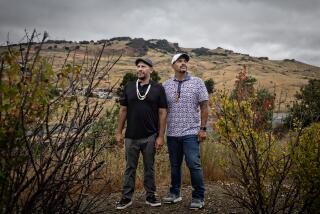Southwest Land Dispute
- Share via
Re “The Shame Continues at Big Mountain,” by Alexander Cockburn, Commentary, April 27:
The Big Mountain controversy is not a 100-year-old disagreement between the Hopi and Navajo. It is the culmination of a millennium of Southwest Indian history. Until the arrival of the Spanish, most Southwest tribes were on an even footing. Most were nomadic and had few permanent homes. The Navajo and Apache tribes were the most successful at using the 16th century technology (read: horses) that the Spanish brought. The Navajo slowly assumed a more dominant role because they were able to cover greater distances. Until this time, the Big Mountain area was more Hopi than Navajo. The U.S. government put both Hopi and Navajo into the same reservation area.
Black Mesa is full of coal and the Peabody Western Coal Co. has the government’s approval to exploit same. This exploitation will eventually drain the water table in the Four Corners area, making communities as far away as Albuquerque, N.M., lack ground water.
Any time someone discusses tribal relations in the Southwest, they need to look at it from the historical perspective. The cliff dwellers of the Southwest are often referred to as the “Anasazi.” This is loosely translated as the “ancient ones.” It is a Navajo word meaning “ancestors of our enemies.”
LARRY SULLIVAN
Venice
More to Read
Sign up for Essential California
The most important California stories and recommendations in your inbox every morning.
You may occasionally receive promotional content from the Los Angeles Times.










